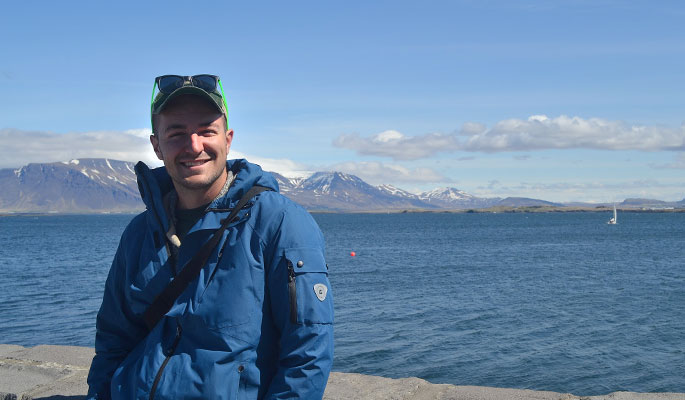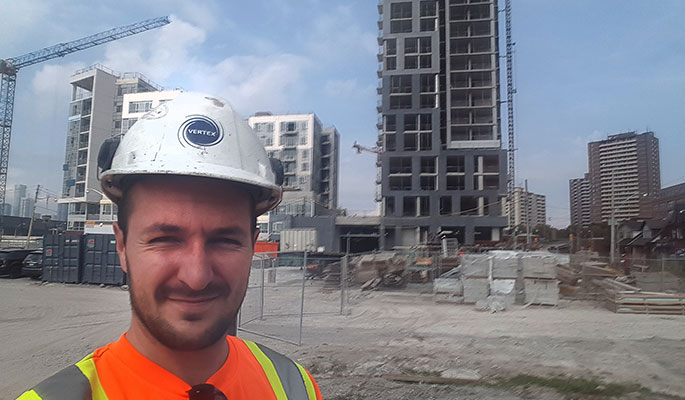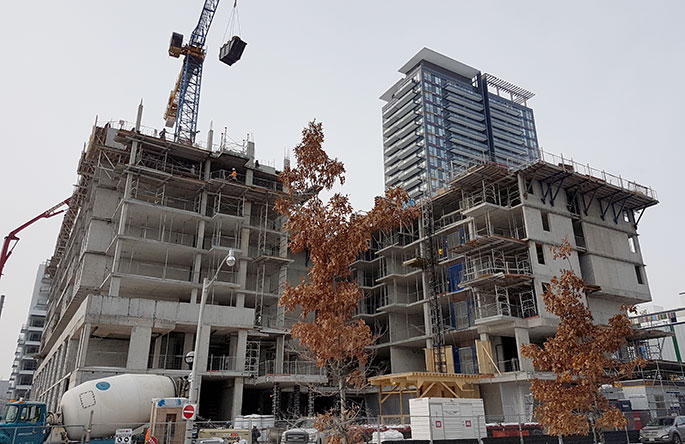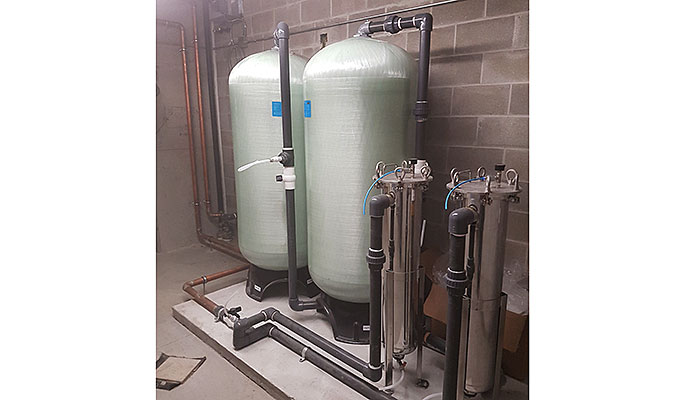There’s Never a Dull Moment!
Hi, I’m Iain Walton of Vertex, and as a Junior Project Manager in the contracting industry, I don’t often get the chance to be bored! It’s been 4 years since I finished university. I’ve discovered there’s some truth to what is sometimes said: the real learning begins once you leave the classroom.

I have had the good fortune to learn by doing, applying advanced and cutting edge remediation technologies first hand. And travelling to work sites has provided the opportunity to visit many places across our beautiful country. For example, I have injected petroleum degrading oxidants into the subsurface at gas stations and industrial sites all across the Greater Toronto Area, and as far afield as St. John’s, Newfoundland. I’ve completed High Resolution surveys to map subsurface contamination in Labrador to the east, Calgary in the west, and many towns and cities in between. Working for Vertex, a relatively small, highly specialized firm in a young but ever evolving field, allows me to wear many hats and develop an enviable skill set.
This year, much of my focus has centered on the Ontario condo boom. I’ve spent many days working inside the foundations of soon-to-be completed high rise towers along the GTA skyline.


The reason?
The City of Toronto has tightened up their sewer use by-law.
Storm water and/or groundwater accumulating at a construction site is now considered “private water”. In the past, this water was called “nuisance water” and could simply be collected and discharged to the storm sewer via a nearby catch basin with a short term construction discharge permit. Problem solved for developers! The construction schedule could march on.
The trouble is this water ultimately ends up in our rivers and lakes where it can be harmful to the fish habitat. In other cases, the water is discharged to the sanitary sewer, where contaminants or suspended solids add to already overburdened sewer networks and wastewater treatment plants.
To address these concerns, in 2016, the City of Toronto tightened up its sewer use by-law. Accumulated water on construction sites must now be metered, sampled, and discharged under approval of a permit. And after construction, since the building has to be kept high and dry, the mechanical design for the building must now consider the quality (not just the quantity) of water to be managed on an ongoing basis.
Design drawings must now be submitted to provide the details of pumps, filters, and treatment processes. Construction project managers may be faced with treating water contaminated with fuels, solvents, metals and other compounds. Why are these things found in the groundwater? The development of infill and brownfield sites encounters the legacy of manufacturing plants, fuel depots, and other commercial operations. As a result of historic contaminating activities, these materials can continue to leach from the ground and find their way into the groundwater.
In addition, particularly troubling (and likely frustrating for developers) are naturally occurring “contaminants”.
Phosphorous and manganese, are examples of elements commonly detected in groundwater well above acceptable levels for discharge to storm sewer. These simply leach from the natural geology of the area. So even in the absence of historic contaminating activities at a site, there may be a need to treat the groundwater prior to discharge into the storm sewer. Further complicating matters is the fact the required treatment processes for naturally occurring elements can be complex. The methods are highly dependent on the specific geochemistry and the natural form taken by these elements as they dissolve into the groundwater.

Luckily for me and our team at Vertex, we enjoy taking on these “interesting” projects. We often start by obtaining a small sample of the groundwater for testing on our laboratory bench. Based on what works best, we then design the treatment process, source equipment and work with developers to update their drawings. Part of the design work also includes a Cost-Benefit Analysis. The purpose is to decide if the storm sewer is truly the best discharge point for the water. A fee is charged for sanitary sewer discharges whereas storm sewer discharge is currently free in Toronto. However, the treatment requirements for sanitary discharges are less stringent, so based on the volume and quality of the water to be handled, sanitary sewer discharge may actually be the more economical option in the long run.
Once the design work is complete, an application is submitted to Toronto Water to obtain a Sewer Discharge Agreement (SDA). The application process rigorously ensures there is a proper water treatment design and monitoring plan in place. It is important to leave sufficient time to complete the application process in order to avoid construction delays.
From our perspective, we like to be involved at each stage from design, permitting through to installation of the water treatment systems. We’ve found that when we fully understand the problem, we are able to develop a solution that’s the best fit and then speak to that solution with the regulators.
So if you’re needing support handling groundwater and sewer discharges for a development project, reach out to me and we can come up with a plan to keep your project moving forward.
_____________________________________________
Until next time: Excellence is Your Choice!
Iain Walton, Vertex Environmental
(519) 653-8444 ext. 301

